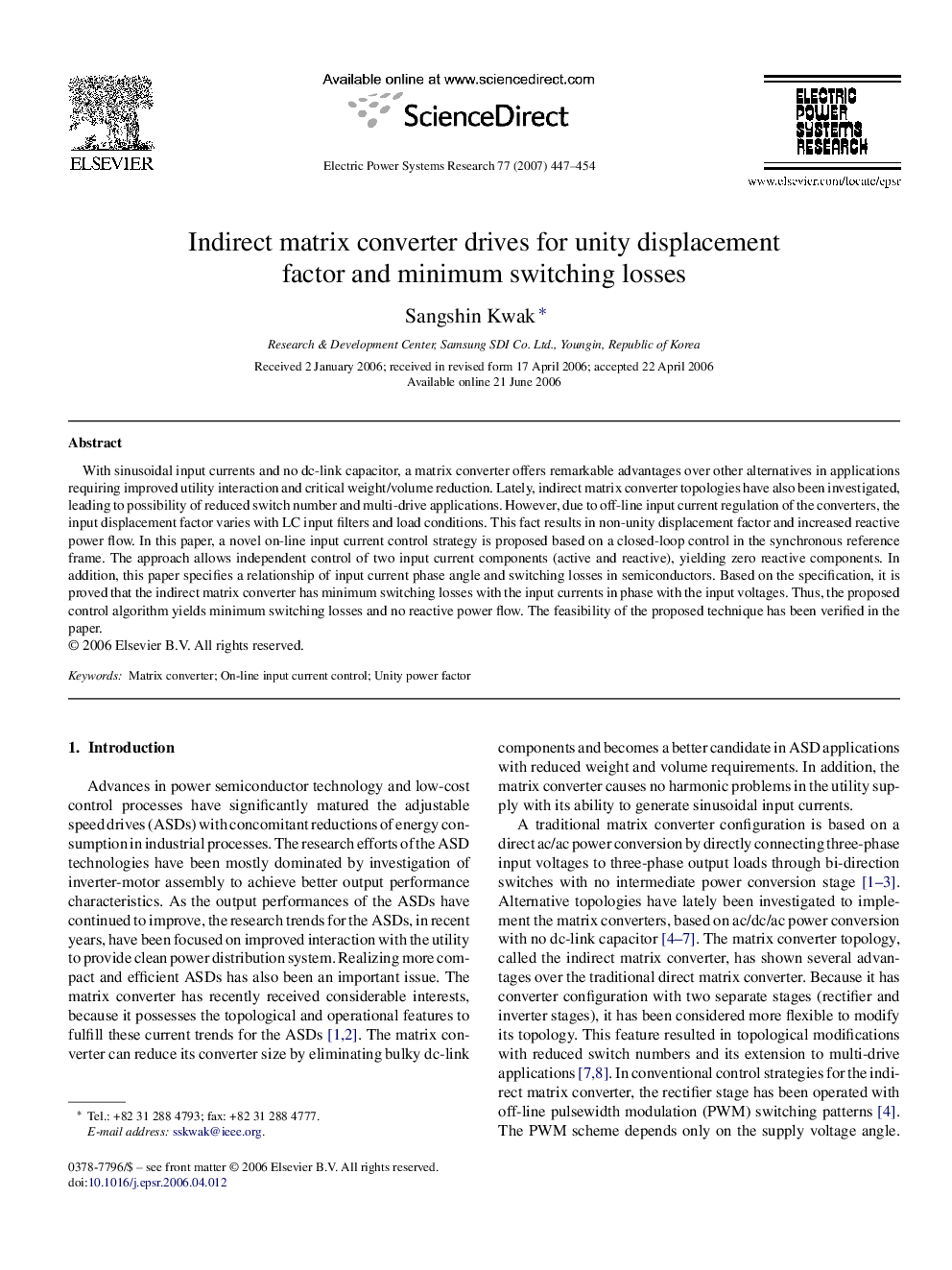| Article ID | Journal | Published Year | Pages | File Type |
|---|---|---|---|---|
| 705731 | Electric Power Systems Research | 2007 | 8 Pages |
With sinusoidal input currents and no dc-link capacitor, a matrix converter offers remarkable advantages over other alternatives in applications requiring improved utility interaction and critical weight/volume reduction. Lately, indirect matrix converter topologies have also been investigated, leading to possibility of reduced switch number and multi-drive applications. However, due to off-line input current regulation of the converters, the input displacement factor varies with LC input filters and load conditions. This fact results in non-unity displacement factor and increased reactive power flow. In this paper, a novel on-line input current control strategy is proposed based on a closed-loop control in the synchronous reference frame. The approach allows independent control of two input current components (active and reactive), yielding zero reactive components. In addition, this paper specifies a relationship of input current phase angle and switching losses in semiconductors. Based on the specification, it is proved that the indirect matrix converter has minimum switching losses with the input currents in phase with the input voltages. Thus, the proposed control algorithm yields minimum switching losses and no reactive power flow. The feasibility of the proposed technique has been verified in the paper.
